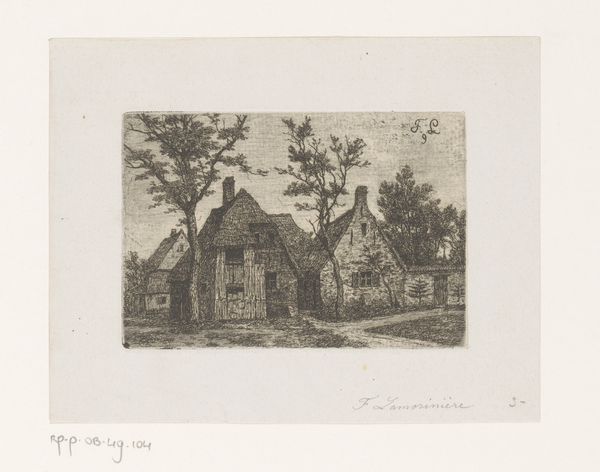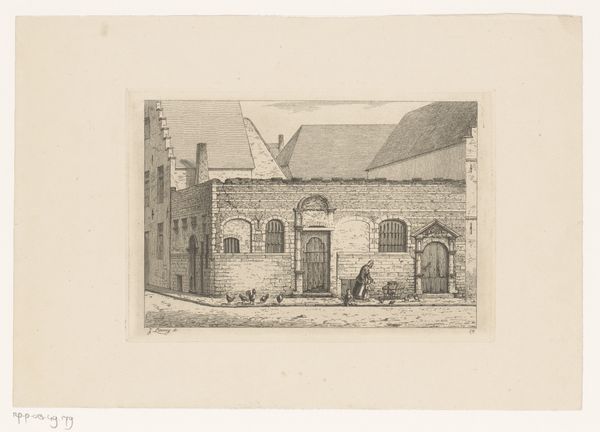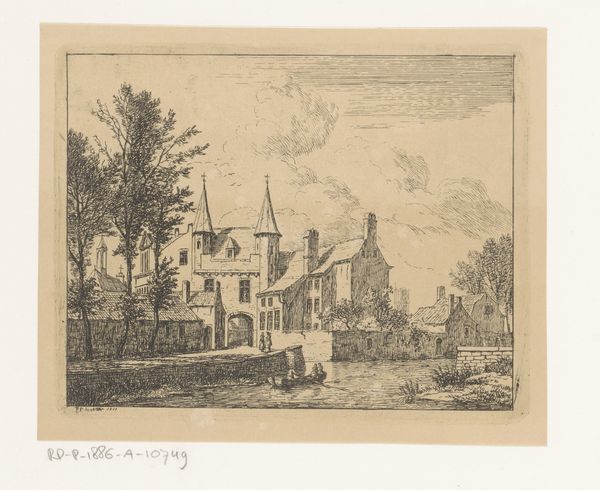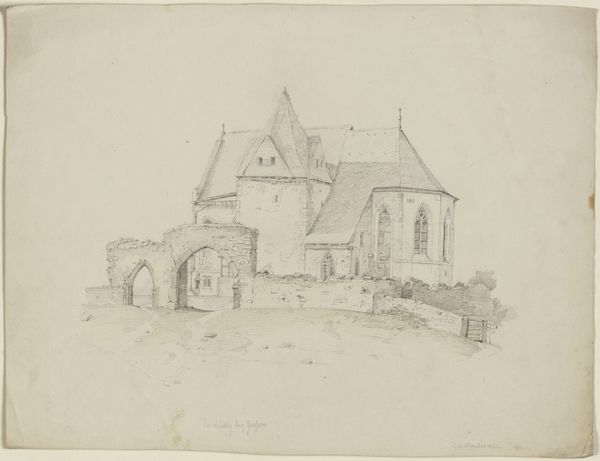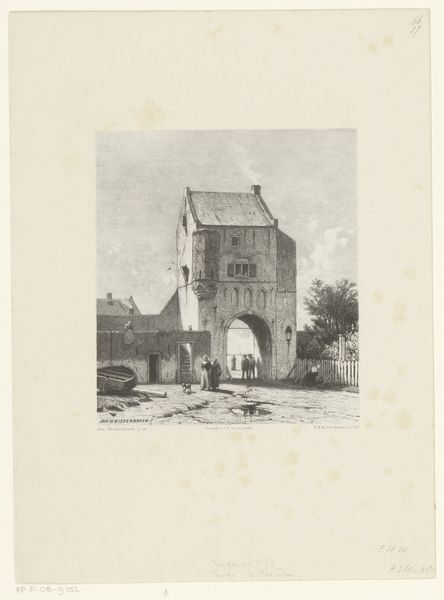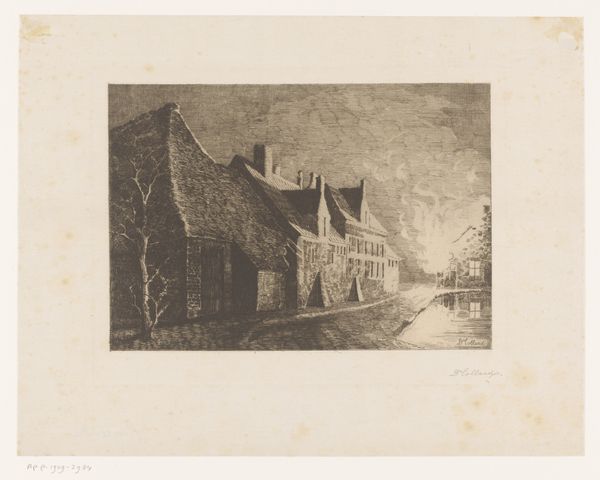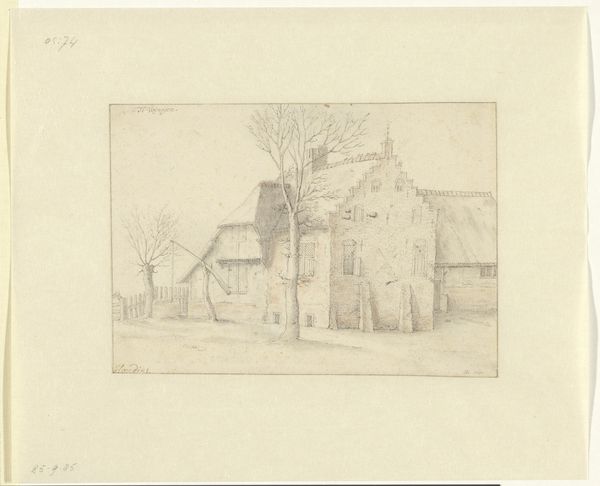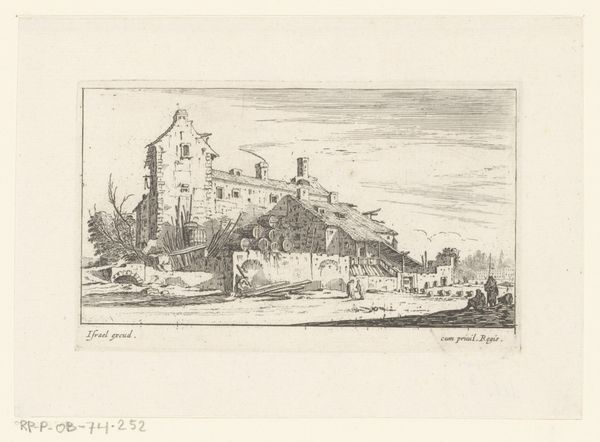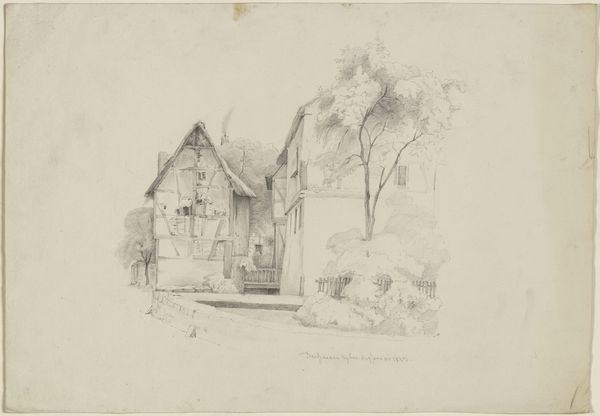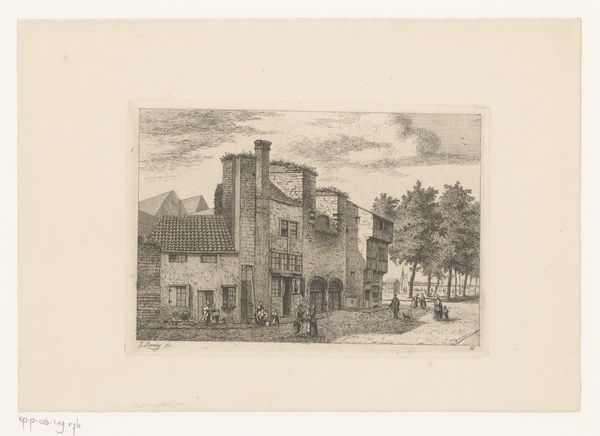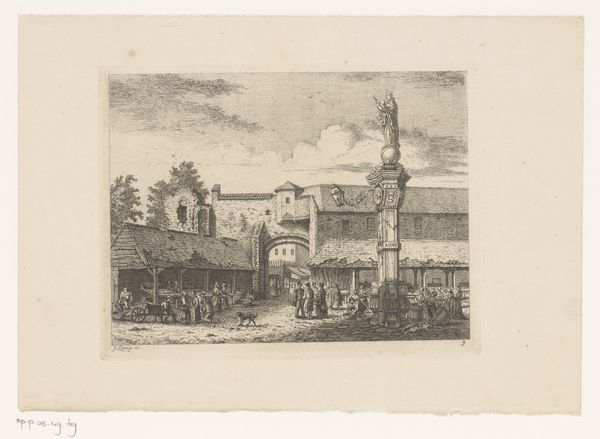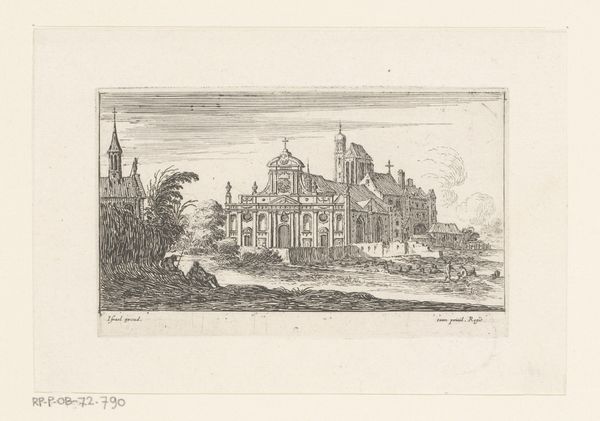
drawing, print, etching, architecture
#
drawing
# print
#
etching
#
landscape
#
etching
#
architecture
Dimensions: height 90 mm, width 151 mm
Copyright: Rijks Museum: Open Domain
Curator: We're looking at "View of a Farmhouse in Duffel" by Albert Van Holsbeeck, an etching dating from between 1887 and 1912. What's your first impression? Editor: Ethereal. It's mostly tones and textures, with light, broken lines—a beautiful sense of depth that gives it this sort of melancholic atmosphere. Curator: That melancholy could be tied to the realities of rural life in the late 19th century, when this area saw rapid industrialization. Holsbeeck captured a disappearing way of life, a kind of Flemish romanticism contrasting against the pressures of the modern era. Editor: I'm drawn to the artist's ability to create visual interest out of almost nothing. Look at the way he uses the texture of the paper, letting it peek through the delicate line work to suggest the subtle variations in light and form across the building. The etching feels deliberately understated. Curator: I find the location, Duffel, particularly interesting. It was transitioning from an agrarian society to a more industrialized one, and you see this tension reflected in artistic output of the time. The decision to immortalize this farmhouse is inherently political, romanticizing a world that’s vanishing. Editor: Yes, and notice how the farmhouse isn't idealized—the composition is realistic but imperfect. The slight asymmetries and lack of pristine details adds authenticity. There’s a lack of focus; it almost looks like a fading photograph. Curator: The distribution of these prints would have contributed to the broader cultural discourse. It prompts us to question the impact of industrial progress, particularly on those whose lives were directly disrupted. The image also echoes the aestheticism of the era. Editor: What strikes me is the artist's mastery over a minimalist palette and restricted range of lines. How he makes use of so little to say so much about depth and the surface texture itself, not just about subject matter, is remarkable. Curator: Ultimately, Holsbeeck's "View of a Farmhouse in Duffel" stands as more than just a picture of a building. It encapsulates an important moment in social and cultural history and forces us to engage with a community whose stories should never be lost. Editor: For me, its lasting appeal rests on the sensitive handling of line and form, and the way its formal qualities mirror the gentle nostalgia of the subject matter.
Comments
No comments
Be the first to comment and join the conversation on the ultimate creative platform.
